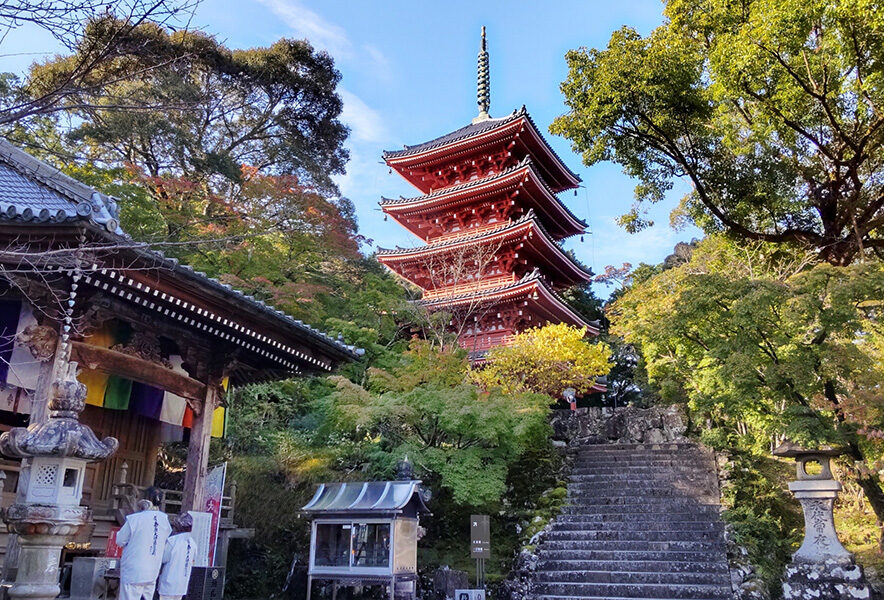What is “Chikurinji Temple”?
Chikurinji Temple was founded in 725 by Emperor Shomu (725), and was named after the Tang Dynasty’s Gotai Mountain by Gyoki.
In the main hall (Monjudo), there is a wooden statue of Monju Bosatsu (Manjusri) built in the late Heian period (794-1185) as the principal image.
This is a hidden Buddhist statue that is opened only once every 50 years, so you may or may not see it once in your lifetime.
There are many places of interest such as the Monjudo Hall, the five-story pagoda, Buddhist statues designated as national important cultural properties, and the garden.

Highlights of Chikurinji Temple
Stroking it will bring you blessings.
Born the son of an Indian chief and awakened to Buddhism, Zenzai Doji was taught by 53 leaders and trained by Monju Bosatsu (Manjusri Bosatsu) to attain enlightenment.
It is said that if you stroke the cute statue of Zenzai Doji, who is facing the main hall and holding his hands in prayer to Monju Bosatsu, you will receive the virtues of the Buddha.
Binzuru Venerable Binzuru, who stands in a corner of the main hall, is popularly called “Binzuru-san” (Mr. Binzuru).
It is said that if you stroke the same part of your body that is wrong with you, your illness will be cured.
Both Zenzai-doji and Binzuru-san can be stroked without hesitation.
The “One Word Jizo Son” with its miraculous powers.
A small hall near the five-story pagoda enshrines a Jizo who grants only one wish.
Since the Jizo will grant you one wish at a time, not a lifetime wish, why not make one wish at a time instead of a whole lot at once?
Don’t forget to thank him when your wish comes true.
Picturesque five-story pagoda
Rebuilt in 1980 (Showa 55), it is 31 meters high and is the symbol of Chikurin-ji Temple.
Unusually for a Shikoku sacred site, only five of the 88 temples have five-story pagodas.
The pagoda offers a beautiful collaboration of colors in each season: autumn leaves in fall, cherry blossoms in spring, and brightly colored greenery.
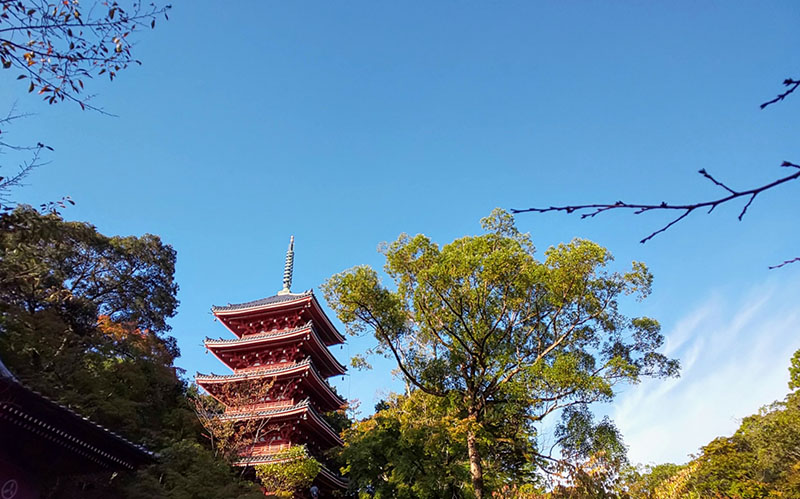
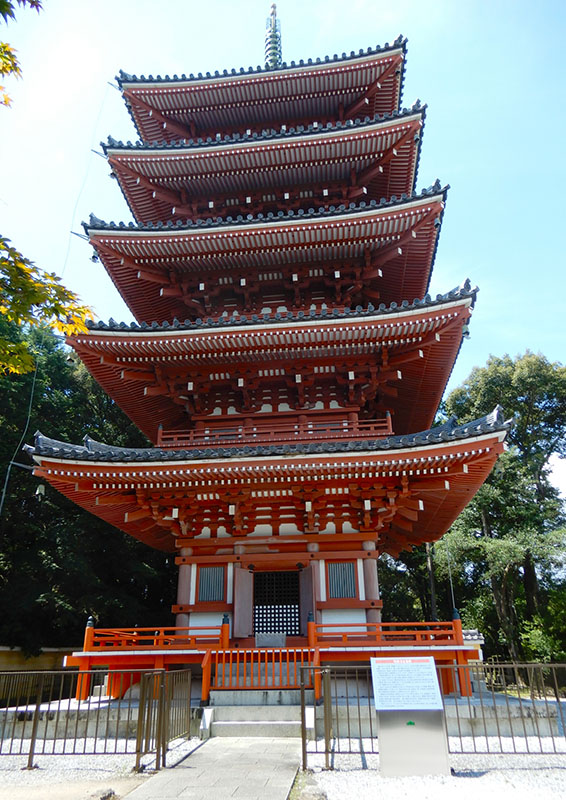
Places to visit in the vicinity
Tragic love story of Junshin and Oma
The monk in the phrase “I saw a monk buying a kanzashi at Harimaya Bridge in Tosa, Yosakoi” is Keizen, a monk in training at Chikurinji Temple, and his partner is Oma-chan from Godaisan Komachi.
Keizen-san is dating someone other than Oma-chan, and Oma-chan, troubled, consults with Junshin-san, a senior monk.
As she consults with him, she becomes attracted to the sincere Junshin.
When Keicho learns of Omachan’s change of heart, he buys her a hairpin to attract her attention, but when she does not change her mind, he tells everyone that it was Junshin who bought her the hairpin.
Rumors spread and the two eloped, but they were discovered and taken back.
After that, they went on with their lives.
Harimaya Bridge
Harimaya Bridge” is a very small bridge that is used as a phrase in a song.
Nowadays, the area around the bridge has been developed as “Harimayabashi Park” and is easy to find.
The bridge is marked by a vermilion parapet that spans a small stream in the park. Unfortunately, Tachibanaya, where I bought the hairpin that appears in the Yosakoi-busi, is no longer there.
A statue of “Junshin and Oba” has also been erected.
Sansuien” under Kochi Castle.
This inn with natural hot spring baths stands on the site of the former residence of the Yamauchi family, lords of the Tosa Clan.
The large Japanese garden is decorated with a muku tree, which is estimated to be 600 years old, as well as satsuki (Japanese azalea) and pine trees.
The magnificent gate, which does not look like a hotel, will make you hesitate for a moment and look twice. Within the premises, you can see historical buildings such as the former Yamauchi family’s tenement house, which is an important cultural property.
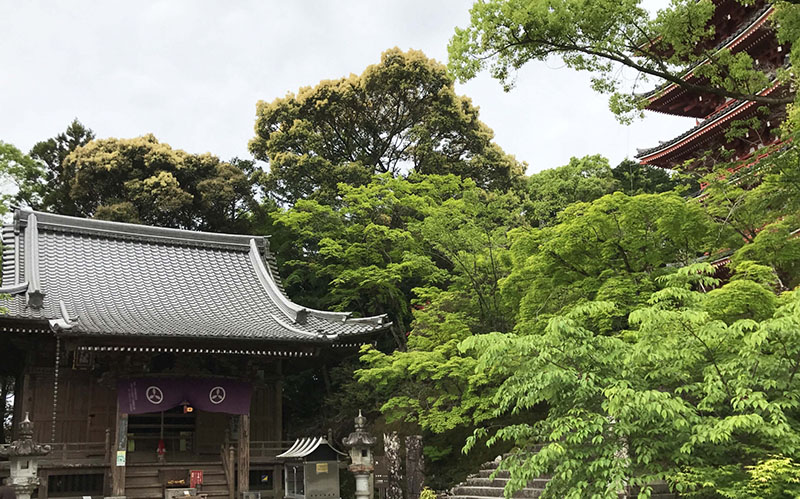
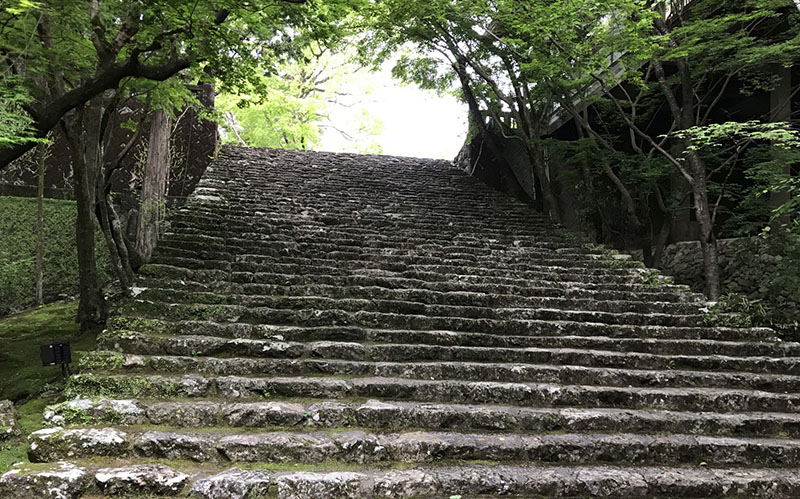
Access to Chikurinji Temple
3577 Godaisan, Kochi City, Kochi Prefecture, 781-8125, Japan
Parking around Chikurinji Temple
Chikurinji Temple Official Website
Official site:http://www.chikurinji.com/index.html
